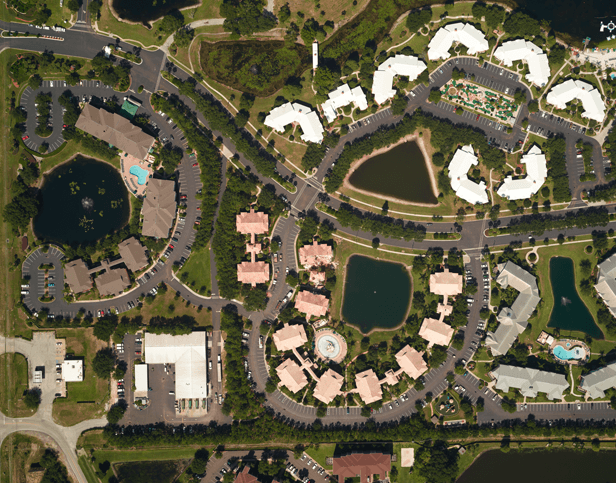Last month, Apple posted a press release on their website announcing the launch of a new iPad Pro, complete with a LiDAR Scanner. We are thrilled that Apple is introducing the concept of LiDAR to consumers and want to take the opportunity to point out the basic functions of LiDAR to those who may be wondering what it is and how it works.
LiDAR stands for Light Detection and Ranging. It is a method of surveying that uses light (in the form of a pulsed laser) and sensors to detect and measure various objects and features. The results of the surveys, combined with other data, can be made into 3D maps. These maps utilize colors to show height measurements, where different colors indicate levels of elevation (as seen on the key in the bottom left hand corner). LiDAR can be achieved through airborne, terrestrial or mobile technologies — Pickett uses airborne and LiDAR for the quickest and most accurate results. Using data fusion, Pickett can merge results from ground surveys, hydrographic surveys, aerial LiDAR and digital imagery into a complete, all-encompassing map product that provides an in-depth view of a project site’s features.
In the energy sector, we can perform LiDAR surveys of corridors with less than 1 mile to several hundred miles. For the mining sector, we provide aerial surveys ranging in size from less than 1-acre stockpiles to several thousand acres, using the data to create digital surfaces and compute high-accuracy volumes for accounting purposes.
For a more comprehensive look into our LiDAR capabilities, click here.
Apple (2020, March 18). Apple unveils new iPad Pro with breakthrough LiDAR Scanner and brings trackpad support to iPadOS. Retrieved from: https://www.apple.com/newsroom/2020/03/apple-unveils-new-ipad-pro-with-lidar-scanner-and-trackpad-support-in-ipados/
